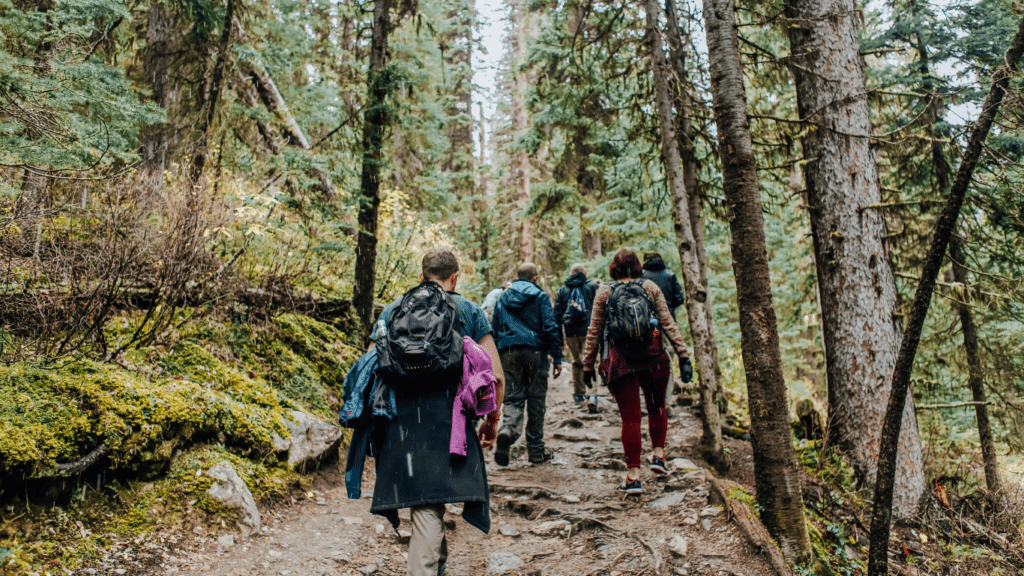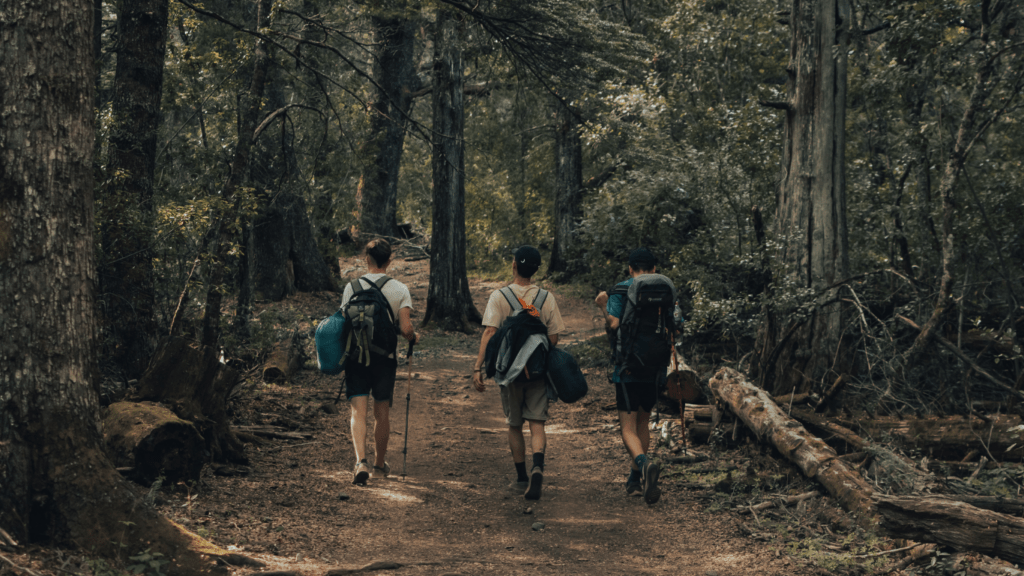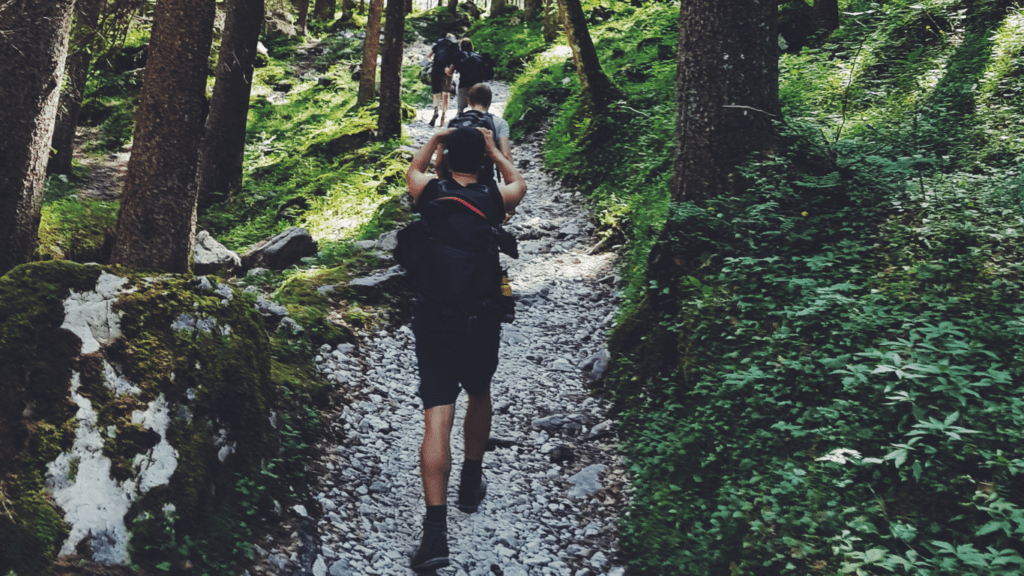Understanding the Basics of Hiking
Comprehending the essentials of hiking is crucial for any beginner. First, choose an appropriate trail that matches your fitness level. Websites like AllTrails offer detailed information on difficulty, distance, and elevation gain. Sticking to well-marked paths reduces the risk of getting lost.
Equipping yourself with the right gear is fundamental. Comfortable hiking shoes with good traction are mandatory. Carry a daypack to hold water, snacks, a map, a first-aid kit, and a multitool.
Hydration and nutrition shouldn’t be overlooked. Pack at least 2 liters of water for a day hike and consume high-energy snacks like nuts, trail mix, or energy bars. Proper hydration and nutrition maintain energy levels and prevent fatigue.
Understanding the weather helps in planning. Check forecasts to avoid extreme conditions. Dress in layers to adapt to changing weather. Wear moisture-wicking clothes to stay dry and comfortable.
Familiarize yourself with Leave No Trace principles. These guidelines stress minimizing impact on nature. Pack out all trash, stay on trails, and respect wildlife.
Basic navigation skills enhance safety. Learn to read a map and use a compass. While GPS is helpful, don’t rely solely on electronics as batteries can die.
Group hiking boosts safety and enjoyment. Inform someone of your plans if hiking alone. Carrying a whistle can help attract attention in emergencies.
Understanding these basics prepares you for a successful hiking experience.
Essential Gear and Equipment
Proper gear ensures a safe and comfortable hiking experience. As a beginner, understanding the importance of each item helps you prepare for the journey ahead.
Footwear
Good hiking footwear supports your feet and prevents injuries. Opt for hiking boots or trail shoes that offer good traction and ankle support. Ensure they’re waterproof if hiking in wet conditions. Break them in before the hike to avoid blisters.
Clothing
Layered clothing adapts to changing weather. Start with a moisture-wicking base layer to keep sweat off your skin. Add an insulating layer for warmth, like a fleece or lightweight jacket. Top it with a waterproof and windproof outer layer. Choose synthetic or wool over cotton, as it dries faster.
Backpack
A well-fitted backpack distributes weight evenly. For shorter hikes, a daypack (15-30 liters) suffices. Look for padded shoulder straps, a hip belt, and a ventilated back panel. Pack light essentials like:
- water
- snacks
- first-aid kit
- multi-tool
- trash bag
Navigation Tools and Maps
Reliable navigation tools are crucial. Carry a physical map and compass in addition to electronic devices like a GPS or smartphone with trail apps. Learn basic map-reading and compass skills to navigate if devices fail.
Planning Your First Hike

Preparing well can make your first hike enjoyable and stress-free. Here are key factors to consider when planning your initial adventure.
Choosing the Right Trail
Selecting a trail suited to your experience and fitness level is essential. Start with easy, well-marked trails like nature parks or guided pathways. Resources like AllTrails and local park websites offer trail ratings and user reviews. Check trail specifics, including length, elevation gain, and terrain type. Avoid trails with complex navigation or difficult terrain until gaining more experience.
Duration and Difficulty
- Estimate the hike duration based on distance and expected pace.
- Beginners typically cover 2-3 miles per hour on flat terrain.
- For elevation changes, add one hour per 1,000 feet gained.
- Choose hikes that can be completed within daylight hours to avoid unexpected challenges in the dark.
- Match the difficulty level with your fitness; shorter, less strenuous hikes make ideal starters.
Weather Considerations
Accurately assessing the weather is vital for a comfortable trip. Use reliable weather apps and check forecasts for the hike location. Understand that mountain weather can change rapidly, even on a seemingly clear day. Dress in layers to adapt to varying conditions and ensure you have a waterproof jacket. Plan extra time by starting earlier if adverse weather is expected.
Safety Tips for Beginners
Hiking can be both exhilarating and daunting for beginners. Understanding safety basics is key to a successful hike.
Hydration and Nutrition
Staying hydrated is crucial for any hiker. Carry at least 2 liters of water to avoid dehydration. High-energy snacks like trail mix or energy bars provide the necessary fuel. Eating small amounts regularly maintains energy levels and prevents fatigue.
First Aid Essentials
Basic first aid items are essential for tackling minor injuries. Pack adhesive bandages, antiseptic wipes, blister treatment, and pain relievers. A compact first aid kit fits easily in your daypack and prepares you for unexpected mishaps.
Wildlife Awareness
Knowing how to handle wildlife encounters is vital. Make noise to alert animals to your presence and avoid startling them. Keep a safe distance from all wildlife, even if they seem harmless. If confronted by larger animals like bears, use deterrents like bear spray and know escape routes.
Building Your Hiking Skills
Building hiking skills ensures a more enjoyable and safe experience on the trails. Here are some key aspects to focus on.
Pacing and Resting
Maintaining a consistent pace helps conserve energy. I recommend starting slow to gradually build stamina. Once you find a comfortable pace, stick to it even if you feel you can go faster. Regular breaks, every 30-45 minutes, prevent fatigue and allow time to hydrate and snack.
Trail Etiquette
Respecting trail etiquette is crucial for a positive experience. Always yield to uphill hikers if you’re descending. Stay on marked trails to protect the environment. When overtaking, announce your presence politely. If you hike with pets, keep them leashed and clean up after them. Remember that a smile and a greeting go a long way in fostering a friendly trail community.
Advanced Techniques
As you gain experience, incorporating advanced techniques can enhance your hiking. Learn to read topographic maps for better navigation and plan routes with varying terrains to build strength. Practice using trekking poles for stability and efficient energy use, especially on uneven ground. Experiment with different pacing strategies on inclines and descents to improve your overall hiking efficiency.
Recommended Beginner Hikes
Starting with beginner-friendly trails is key to building confidence and enjoying the hiking experience. Here are some suggestions:
Local Trails
Local trails offer accessible options close to home. Many city and county parks have well-marked trails suitable for beginners. For example, Turkey Mountain in Tulsa, Oklahoma, provides a variety of short, easy hikes with scenic views of the Arkansas River. Exploring local trails is a convenient way to familiarize yourself with hiking without extensive travel time.
National Parks
National parks feature numerous trails catering to all skill levels. Great Smoky Mountains National Park offers the Laurel Falls Trail, a moderate 2.6-mile round trip that rewards hikers with a stunning waterfall. Similarly, Yosemite National Park’s Lower Yosemite Fall Trail is an easy, 1-mile loop that provides an impressive view of the waterfall. National parks often have visitor centers with information on trail conditions, making them a reliable choice for new hikers.
Community Resources
Community resources like hiking clubs and online forums are invaluable for beginners. Websites like Meetup.com list local hiking groups that organize beginner-friendly hikes. Joining these groups helps new hikers find companions and receive support from experienced hikers, making the learning curve less daunting. Additionally, using resources like the AllTrails app offers detailed trail maps, user reviews, and difficulty ratings to help choose suitable trails.



 Hiking Trail Guide Expert & Outdoor Adventure Curator
Keturaha Perrymaners is an experienced trail guide and hiking enthusiast with an unparalleled passion for discovering and exploring nature’s most beautiful and secluded paths. As the hiking trail expert at Whisper Forest Ways, Keturaha curates comprehensive guides that cover everything from beginner-friendly walks to challenging multi-day treks. Her deep knowledge of terrain, weather patterns, and outdoor safety ensures that her recommendations cater to hikers of all levels, helping them prepare for their adventures with confidence. Whether you’re seeking scenic trails for mindfulness walks or rugged paths for a physical challenge, Keturaha’s expertly crafted guides provide the insights and inspiration you need to venture into the wilderness and fully immerse yourself in nature’s beauty.
Hiking Trail Guide Expert & Outdoor Adventure Curator
Keturaha Perrymaners is an experienced trail guide and hiking enthusiast with an unparalleled passion for discovering and exploring nature’s most beautiful and secluded paths. As the hiking trail expert at Whisper Forest Ways, Keturaha curates comprehensive guides that cover everything from beginner-friendly walks to challenging multi-day treks. Her deep knowledge of terrain, weather patterns, and outdoor safety ensures that her recommendations cater to hikers of all levels, helping them prepare for their adventures with confidence. Whether you’re seeking scenic trails for mindfulness walks or rugged paths for a physical challenge, Keturaha’s expertly crafted guides provide the insights and inspiration you need to venture into the wilderness and fully immerse yourself in nature’s beauty.
